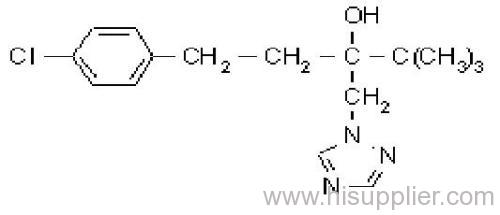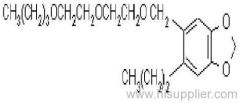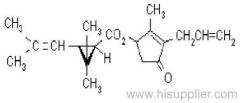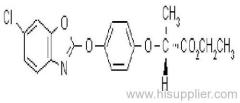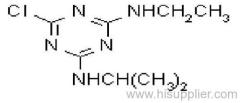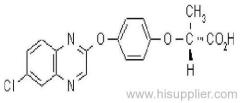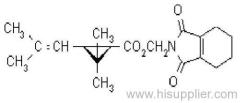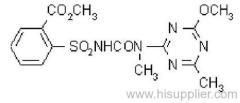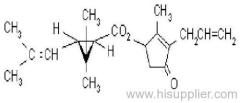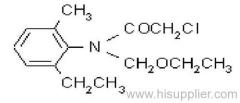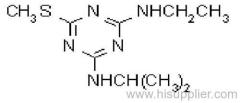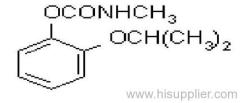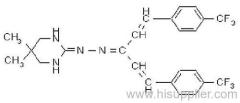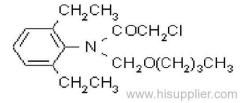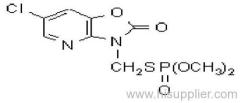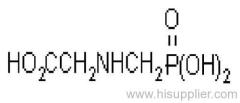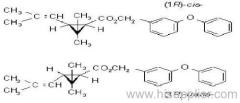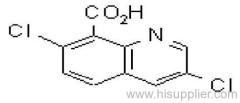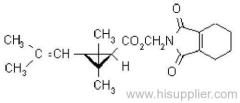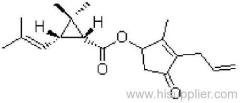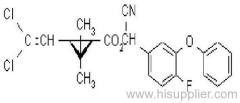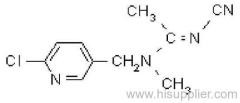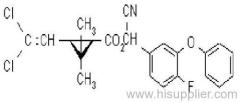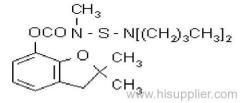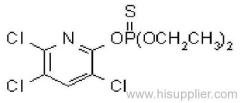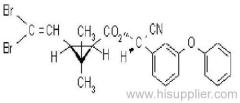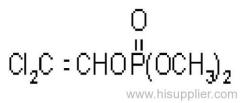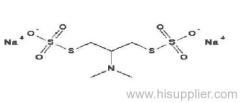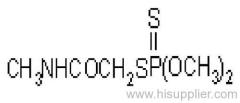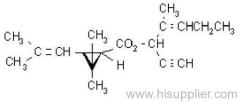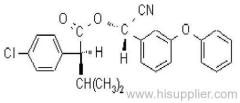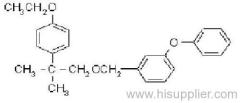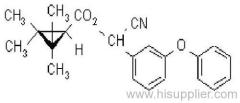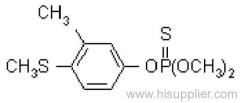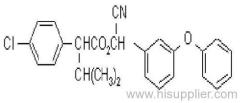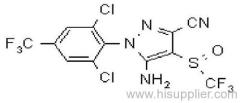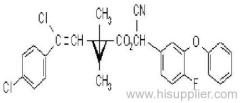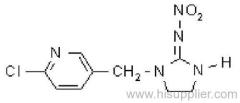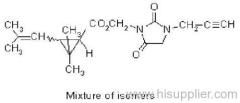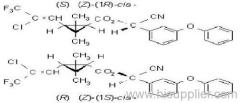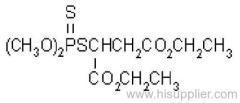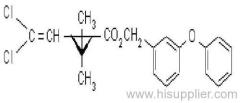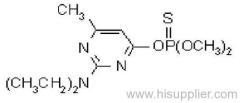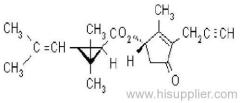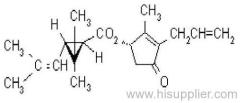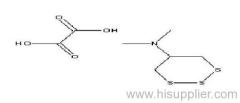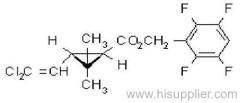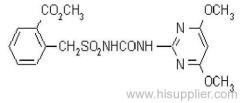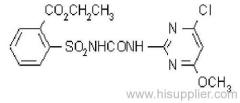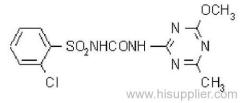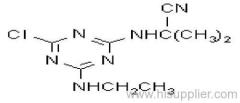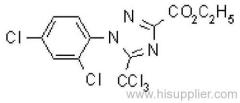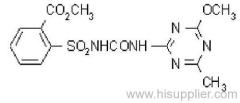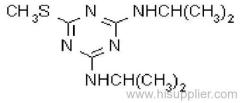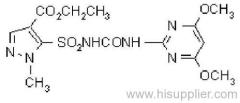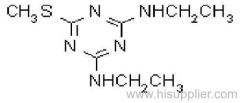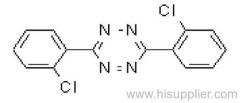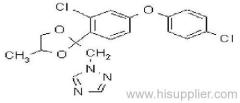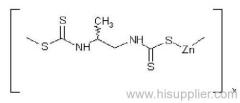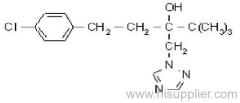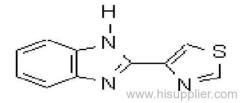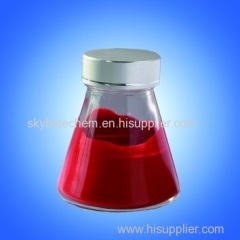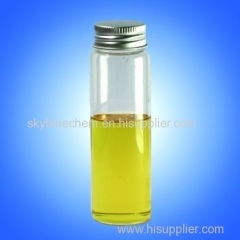
|
Shanghai Skyblue Chemical Co., Ltd.
|
Tebuconazole
| Place of Origin: | Shanghai, China (Mainland) |
|
|
|
| Add to My Favorites | |
| HiSupplier Escrow |
Product Detail
Systemic fungicide with protective, curative, and eradicant action. Rapidly absorbed into the vegetative parts of the plant, with translocation princi
Common name: tebuconazole
IUPAC name: (RS)-1-p-chlorophenyl-4,4-dimethyl-3-(1H-1,2,4-triazol-1-ylmethyl)pentan-3-ol
Chemical Abstracts name: (±)-α -[2-(4-chlorophenyl)ethyl]-α-(1,1-dimethylethyl)-1H-1,2,4-triazole-1-ethanol
Other names: fenetrazole*; terbuconazole*; terbutrazole*; ethyltrianol*
CAS RN: [107534-96-3]
PHYSICAL CHEMISTRY
Composition: Racemate. Mol. wt.: 307.8; M.f.: C16H22ClN3O Form: Colourless crystals; (tech., colourless to light brown powder). M.p.: 105 ºC; V.p.: 1.7x10-3 mPa (20 ºC) (OECD 104). KOW: logP = 3.7 (20 °C). Henry: 1x10-5 Pa m3 mol-1 (20 °C). S.g./density: 1.25 (26 °C). Solubility: In water 36 mg/l (pH 5-9, 20 ºC). In dichloromethane >200, isopropanol, toluene 50-100, hexane <0.1 (all in g/l, 20 ºC). Stability: Stable to elevated temperatures, and to photolysis and hydrolysis in pure water, under sterile conditions; hydrolysis DT50 >1 y (pH 4-9, 22 °C). See also Environmental Fate.
APPLICATIONS
Biochemistry: Steroid demethylation (ergosterol biosynthesis) inhibitor.
Mode of action: Systemic fungicide with protective, curative, and eradicant action. Rapidly absorbed into the vegetative parts of the plant, with translocation principally acropetally. Uses: As a seed dressing, tebuconazole is effective against various smut and bunt diseases of cereals such as Tilletia spp., Ustilago spp., and Urocystis spp., also against Septoria nodorum (seed-borne), at 1-3 g/dt seed; and Sphacelotheca reiliana in maize, at 7.5 g/dt seed. As a spray, tebuconazole controls numerous pathogens in various crops including: rust species (Puccinia spp.) at 125-250 g/ha, powdery mildew (Erysiphe graminis) at 200-250 g/ha, scald (Rhynchosporium secalis) at 200-312 g/ha, Septoria spp. at 200-250 g/ha, Pyrenophora spp. at 200-312 g/ha, Cochliobolus sativus at 150-200 g/ha, and head scab (Fusarium spp.) at 188-250 g/ha, in cereals; leaf spots (Mycosphaerella spp.) at 125-250 g/ha, leaf rust (Puccinia arachidis) at 125 g/ha, and Sclerotium rolfsii at 200-250 g/ha, in peanuts; black leaf streak (Mycosphaerella fijiensis) at 100 g/ha, in bananas; stem rot (Sclerotinia sclerotiorum) at 250-375 g/ha, Alternaria spp. at 150-250 g/ha, stem canker (Leptosphaeria maculans) at 250 g/ha, and Pyrenopeziza brassicae at 125-250 g/ha, in oilseed rape; blister blight (Exobasidium vexans) at 25 g/ha, in tea; Phakopsora pachyrhizi at 100-150 g/ha, in soya beans; Monilinia spp. at 12.5-18.8 g/100 l, powdery mildew (Podosphaera leucotricha) at 10.0-12.5 g/100 l, Sphaerotheca pannosa at 12.5-18.8 g/100 l, scab (Venturia spp.) at 7.5-10.0 g/100 l, white rot in apples (Botryosphaeria dothidea) at 25 g/100 l, in pome and stone fruit; powdery mildew (Uncinula necator) at 100 g/ha, in grapevines; rust (Hemileia vastatrix) at 125-250 g/ha, berry spot disease (Cercospora coffeicola) at 188-250 g/ha, and American leaf disease (Mycena citricolor) at 125-188 g/ha, in coffee; white rot (Sclerotium cepivorum) at 250-375 g/ha, and purple blotch (Alternaria porri) at 125-250 g/ha, in bulb vegetables; leaf spot (Phaeoisariopsis griseola) at 250 g/ha, in beans; early blight (Alternaria solani) at 150-200 g/ha, in tomatoes and potatoes.
Phytotoxicity: Good plant compatibility in most crops with any formulation, and achieved in more sensitive crops by appropriate formulations, e.g. WP, WG or SC.
Formulation types DS; EC; ES; EW; FS; GF; SC; SE; WG; WP; WS.
MAMMALIAN TOXICOLOGY
Oral: Acute oral LD50 for male rats 4000, female rats 1700, mice c. 3000 mg/kg.
Skin and eye: Acute percutaneous LD50 for rats >5000 mg/kg. Non-irritating to skin; mild irritant to eyes (rabbits).
Inhalation: LC50 (4 h) for rats 0.37 mg/l air (aerosol), >5.1 mg/l (dust).
NOEL: (2 y) for rats 300, dogs 100, mice 20 mg/kg diet.
ADI: 0.03 mg/kg b.w.
Toxicity class: WHO (a.i.) III; EPA (formulation) II ('Elite' 45DF); III ('Folicur' 3.6F)
EC hazard: (Xn; R22)
ECOTOXICOLOGY
Birds: Acute oral LD50 for male Japanese quail 4438, female Japanese quail 2912, bobwhite quail 1988 mg/kg b.w. Dietary LC50 (5 d) for mallard ducks >4816, bobwhite quail >5000 mg/kg feed.
Fish: LC50 (96 h) for rainbow trout 4.4, bluegill sunfish 5.7 mg/l (flow through).
Daphnia: LC50 (48 h) 4.2 mg/l (flow through).
Algae: ErC50 (96 h) for Scenedesmus subspicatus 4.01 mg/l (static).
Other aquatic spp.: No effect on Chironomus riparius at 0.1 mg/l (28 d).
Bees: LD50 (48 h) (oral) 175.8 ug/bee; (contact) 0.6 ug/bee.
Worms: Acute LC50 (14 d) for Eisenia foetida 1381 mg/kg dry soil.
Other beneficial spp.: No adverse effects on ground dwellers, e.g. ground beetles (Poecilus cupreus) (adults and larvae) or on foliage dwellers, e.g. ladybirds (Coccinella septempunctata), up to 375 g/ha (EW 250 formulation).
ENVIRONMENTAL FATE
Animals: After three days, elimination was almost complete (>99%). Tebuconazole was excreted with the urine and the faeces.
Plants: Metabolism studies on wheat, grapes and peanuts show that tebuconazole is the major terminal residue. The metabolites detected were mainly triazole-containing compounds of no toxicological relevance. In plant tissue, a mean half-life of 12 days could be derived (cereals).
Soil/Environment: The degradation of tebuconazole in soil was slow in laboratory studies. Under field conditions, the compound degraded much more rapidly, and did not accumulate in long-term studies (3-5 y). Since no residues could be detected in deeper soil layers of these and other studies, and adsorption/desorption studies indicated a low mobility in the soil, groundwater contamination through leaching can be excluded. In natural waters, hydrolysis and indirect photolysis occur; in a pond study, the compound dissipated from the water body with DT50 1-4 w. Low vapour pressure and strong adsorption result in low volatilisation into the air.

